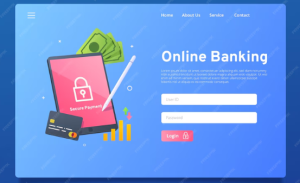Bank levies are a common tool that creditors and government organizations use to collect unpaid debts. Each year, thousands of bank levies are issued across the country. The Internal Revenue Service (IRS) and state revenue departments utilize this method to collect unpaid taxes and ensure tax compliance.
But how long does a levy stay on your bank account? The duration of a bank account levy depends on the specific circumstances and the laws of the jurisdiction involved. The bank will hold these funds, and they won’t be accessible to the account holder until the banks are notified to lift the restrictions. Once the debt is paid or settled, the levy is released.
We will uncover several factors surrounding the bank levy, steps to take when facing this issue, and how it can affect your financial stability.
Definition of Bank Levy
A bank levy is a legal action that a creditor takes to seize money from a debtor’s bank account who has neglected to pay their debts. It’s a powerful tool that allows creditors to collect unpaid debts directly from the debtor’s bank account, bypassing the need for a court judgment.
Once a bank levy is initiated, the creditor sends a notice to the bank, instructing them to freeze the debtor’s account and transfer the funds to satisfy the debt. The bank is legally obligated to comply with the levy and hold the funds until further instructions are given.
Do note that certain exceptions may apply, protecting certain types of funds from being seized, such as Social Security benefits or child support payments. It’s advised to seek legal advice if you find yourself facing a bank levy, as there may be options available to challenge or negotiate the levy.
Purpose of Bank Levies
If you’ve ever wondered why bank levies are used, you have to first understand their purpose in the process of debt collection. Creditors or governmental organizations use bank levies as a tool to collect unpaid debts from individuals or businesses. The main purpose of a bank levy is to seize funds directly from a debtor’s bank account to satisfy the outstanding debt.
When a creditor obtains a judgment against you for unpaid debts, they may seek a bank levy to recover the money owed. The process begins with the creditor filing a lawsuit and obtaining a court order granting permission to levy your bank account. Once the court order is obtained, the creditor can then provide it to your bank, instructing them to freeze and eventually seize the funds in your account.
Bank levies serve as an effective tool for creditors to collect on outstanding debts because they allow for direct access to a debtor’s financial resources. By freezing and seizing funds from a bank account, creditors can ensure that they have a higher chance of recovering the money owed to them.
Process of Bank Levy Enforcement
To enforce a bank levy, you must provide the court order to your debtor’s bank. Once you have obtained the court order, you must submit it to the bank where your debtor holds their account. This court order serves as a legal document allowing you to freeze the funds in the debtor’s account up to the amount owed. The bank will then place a hold on the debtor’s account and freeze the specified funds.
After receiving the court order, the bank will typically notify the debtor of the levy. This notification informs the debtor that their account has been frozen and that they’re no longer able to access the funds. The bank will also provide the debtor with information on how to contest the levy if they believe it was issued in error.
Once the funds have been frozen, the bank will hold them for a specified period, usually around 21 days. During this time, the debtor has the opportunity to resolve the debt or challenge the levy in court. If the debtor fails to take any action, the bank will release the funds to the creditor, allowing you to collect the amount owed.
The process of bank levy enforcement may vary slightly depending on the jurisdiction and specific circumstances. Therefore, it’s advisable to consult with legal professionals to ensure compliance with applicable laws and regulations.
Implications of Bank Levies on Individuals and Businesses
Bank levies can have significant implications for individuals and businesses alike. For individuals, a bank levy can result in frozen bank accounts, making it challenging to access funds for daily expenses or emergencies. This can cause tremendous stress and financial hardship, especially for those living paycheck-to-paycheck. Individuals may also experience difficulty paying bills or meeting financial obligations, leading to negative consequences such as late fees or even eviction.
For businesses, a bank levy can disrupt cash flow and hinder operations. Frozen bank accounts can prevent businesses from paying suppliers, employees, or other essential expenses. This can damage relationships with vendors and employees, leading to potential legal actions or even bankruptcy. A bank levy can also harm a business’s reputation, making it challenging to attract new customers or secure financing.
In both cases, bank levies can create a domino effect, causing a ripple effect of financial difficulties and affecting overall financial stability. Individuals and businesses must understand their rights and options when facing a bank levy, such as seeking legal advice, negotiating payment plans, or exploring alternative sources of income or funding.
Steps to Take When Facing a Bank Levy
When facing a bank levy, take immediate action to protect your assets and minimize the impact on your financial stability. The first step you should take is to gather all the necessary information regarding the levy. This includes understanding why the levy was issued, who issued it, and how much money is being seized from your account.
You should consult with a qualified professional, such as a tax attorney or a financial advisor, who can guide you through the process and help you understand your rights and options. They can also assist you in negotiating with the creditor or agency that issued the levy, potentially reducing the amount of money being seized or arranging a payment plan.
You also have to review your financial situation and create a budget to ensure that your essential expenses are covered. By doing so, you can prioritize your payments and avoid falling into further financial turmoil.
Another step you can take is to explore alternative sources of income or assets that may be exempt from the levy. For example, certain types of retirement accounts or government benefits may be protected from seizure.
Conclusion
A bank levy is a legal process where funds are seized from a bank account to satisfy a debt owed to a creditor. It can have significant implications for individuals and businesses, causing financial strain and disrupting normal operations. When facing a bank levy, take immediate action by seeking professional advice, negotiating with creditors, and exploring options such as filing for bankruptcy or requesting a release of the levy.





